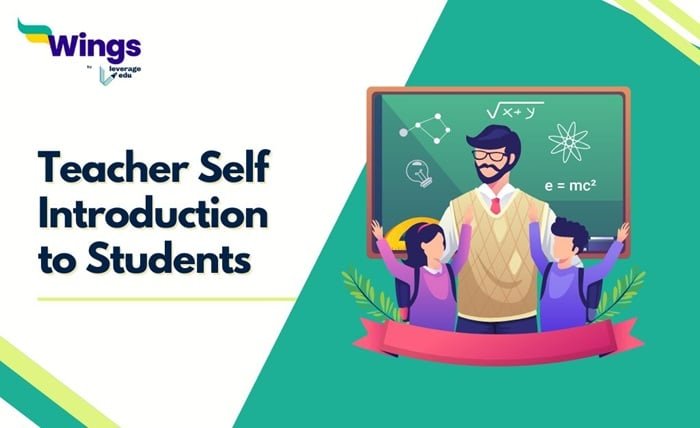Mastering the Art of Self Introduction for Students: A Complete Guide

A self introduction for students is a fundamental skill that can significantly impact your school or university life. Whether you’re meeting new classmates, introducing yourself in a new class, or participating in a group activity, making a good impression is essential. The way you present yourself can set the tone for your interactions, helping you build connections and establish your presence. In this comprehensive guide, we will explore how to craft a compelling self introduction for students, with tips, examples, and the dos and don’ts to ensure you leave a lasting impression.
Why a Self Introduction for Students Matters
The importance of a self introduction for students cannot be overstated. It serves as the first step toward making new connections, whether it’s with peers, teachers, or even potential mentors. A well-crafted introduction helps you:
- Build Confidence: When you know how to present yourself clearly and confidently, you’re more likely to feel at ease in social situations.
- Make a Good First Impression: A self introduction sets the stage for how people perceive you, making it crucial to get it right.
- Facilitate Networking: Whether in a classroom or at a student event, your introduction helps open doors for new relationships and collaborations.
- Clarify Your Intentions: Introducing yourself effectively can communicate your goals, interests, and enthusiasm for learning.
With these benefits in mind, understanding how to approach your self introduction for students becomes a valuable skill that can pay off in both academic and personal settings.
Key Elements to Include in a Self Introduction for Students
When preparing your self introduction for students, it’s important to keep it clear, concise, and focused on the relevant details. Here are the key elements to include:
- Your Name: The most basic yet essential part of your introduction. It’s the first thing people will want to know.
- Your Academic Background: Briefly mention what grade, class, or program you’re in and any relevant academic information that will help others understand your educational journey.
- Your Interests and Hobbies: This gives a personal touch to your introduction and can serve as a conversation starter with others who share similar interests.
- Your Goals or Aspirations: Sharing your goals or what you hope to achieve can help others relate to you and may even open doors for collaboration.
- A Friendly Attitude: Always maintain a positive and approachable demeanor. A friendly smile and an open body language will make your introduction more engaging.
By keeping these elements in mind, your self introduction for students will be structured and effective, ensuring you make a good impression on your audience.
How to Structure Your Self Introduction for Students
A well-structured self introduction for students follows a logical flow, making it easy for your audience to grasp the key points. Here’s a simple structure you can follow:
- Greeting: Start with a polite greeting. For example, “Good morning” or “Hello everyone.”
- Introduce Yourself: Clearly state your name and any relevant academic details. For example, “I’m John Doe, a first-year student in the Computer Science program.”
- Mention Your Interests: Briefly talk about what you enjoy doing, whether it’s reading, sports, or any specific hobbies related to your academic field.
- Share Your Aspirations or Goals: Let others know why you’re excited to be part of the class or community. You can also mention any short-term or long-term goals.
- Invite Interaction: End your introduction with a friendly remark that encourages others to connect. For example, “I’m looking forward to working with all of you.”
This structure keeps your introduction concise while covering all the essential points to give a complete picture of who you are.
Common Mistakes to Avoid in a Self Introduction for Students
While it’s essential to know what to include in your self introduction for students, it’s equally important to be aware of common mistakes. Here are a few things to avoid:
- Overloading Information: Don’t go into too much detail about your life story. Keep your introduction relevant and to the point.
- Lack of Enthusiasm: A flat or monotone delivery can make your introduction forgettable. Show enthusiasm through your voice, posture, and energy.
- Being Too Shy or Overly Assertive: Striking a balance between confidence and humility is key. Avoid sounding too boastful or too reserved.
- Excessive Use of Jargon: Using overly complex words or academic terms can confuse your audience. Keep your language simple and relatable.
- Forgetting to Smile or Make Eye Contact: Non-verbal cues are just as important as the words you speak. A friendly smile and eye contact will make your introduction more engaging.
Avoiding these mistakes will ensure that your self introduction for students is received positively and helps you connect with others effortlessly.
Tailoring Your Self Introduction for Different Settings
A self introduction for students may vary depending on the setting. Whether you’re introducing yourself to a new class, a teacher, or a group of peers, it’s important to tailor your approach based on the context. Here’s how you can adapt your introduction for different situations:
- In the Classroom: When introducing yourself to a class, keep your introduction short and to the point. Mention your name, the course you’re taking, and a little about why you’re interested in the subject.
- In a Group Project: When working with a team, highlight your skills or strengths that can contribute to the project. For example, “I’m good at research and would love to assist with gathering data.”
- At Social Events or Extracurriculars: At informal events, feel free to share more personal interests or hobbies. This helps build rapport and may lead to friendships.
- During Presentations or Public Speaking: In a more formal setting, such as when giving a presentation, focus on your academic achievements or goals that relate to the subject matter.
Adapting your self introduction for students to fit the specific context will make you come across as more appropriate and relatable.
The Role of Body Language in a Self Introduction for Students
Your body language plays a crucial role in how your self introduction for students is perceived. When you stand up to introduce yourself, ensure that your body language reflects confidence and approachability. Here are a few tips:
- Posture: Stand tall with your shoulders back to convey confidence. Avoid slouching, as it can make you appear uninterested or unprepared.
- Smile: A warm smile can go a long way in making a positive impression. It shows that you’re friendly and open to meeting new people.
- Eye Contact: Maintain eye contact with your audience, but don’t stare. It shows that you’re engaged and confident.
- Gestures: Use your hands to emphasize key points, but avoid excessive movement that could be distracting.
Good body language complements your verbal introduction and helps you make a stronger, more positive impact.
Examples of a Self Introduction for Students
To give you a better idea of how to craft your own self introduction for students, here are some examples for different contexts:
-
Example 1: Classroom Introduction
“Good morning! My name is Sarah Smith, and I’m a sophomore majoring in Biology. I’ve always been fascinated by environmental science, and I’m excited to be part of this class to learn more about the subject. I look forward to working with you all.” -
Example 2: Group Project Introduction
“Hello! I’m David Johnson, a second-year student studying Business Administration. I have experience with market research and data analysis, so I’ll be happy to assist with gathering information and analyzing our project data. I look forward to collaborating with everyone.” -
Example 3: Extracurricular Introduction
“Hi, everyone! I’m Emily Carter, a first-year student in the Psychology program. Outside of class, I enjoy playing soccer and volunteering at local animal shelters. I’m excited to join the student council and help organize fun events this year!”
Conclusion
In conclusion, mastering the art of a self introduction for students is an invaluable skill that will serve you throughout your academic journey and beyond. Whether you’re introducing yourself to a new teacher, joining a group project, or networking at a student event, your introduction can set the tone for meaningful interactions. By following the guidelines outlined in this post—such as knowing what to include, avoiding common mistakes, and tailoring your introduction for different settings—you can craft an introduction that showcases your personality, interests, and goals. With practice, you’ll become more confident in your self introductions and leave a lasting, positive impression on others.
FAQs
1. How long should a self introduction for students be?
A self introduction for students should ideally be brief—around 30 seconds to a minute. Keep it concise while ensuring you include all the key details.
2. Should I include personal information in my self introduction?
It’s best to include a mix of academic and personal information, but keep it relevant. Mentioning a hobby or interest can make your introduction more engaging.
3. How do I overcome nervousness when introducing myself?
To overcome nervousness, practice your introduction beforehand. Focus on speaking clearly, maintaining good posture, and remembering that everyone else is just as human as you.
4. Can I use humor in my self introduction?
Using light humor can make your introduction more memorable, but ensure it’s appropriate for the setting. Avoid jokes that could be misunderstood.
5. What if I forget what to say during my introduction?
If you forget what to say, take a moment to compose yourself. It’s okay to pause, and you can always resume with a friendly smile and continue confidently.




